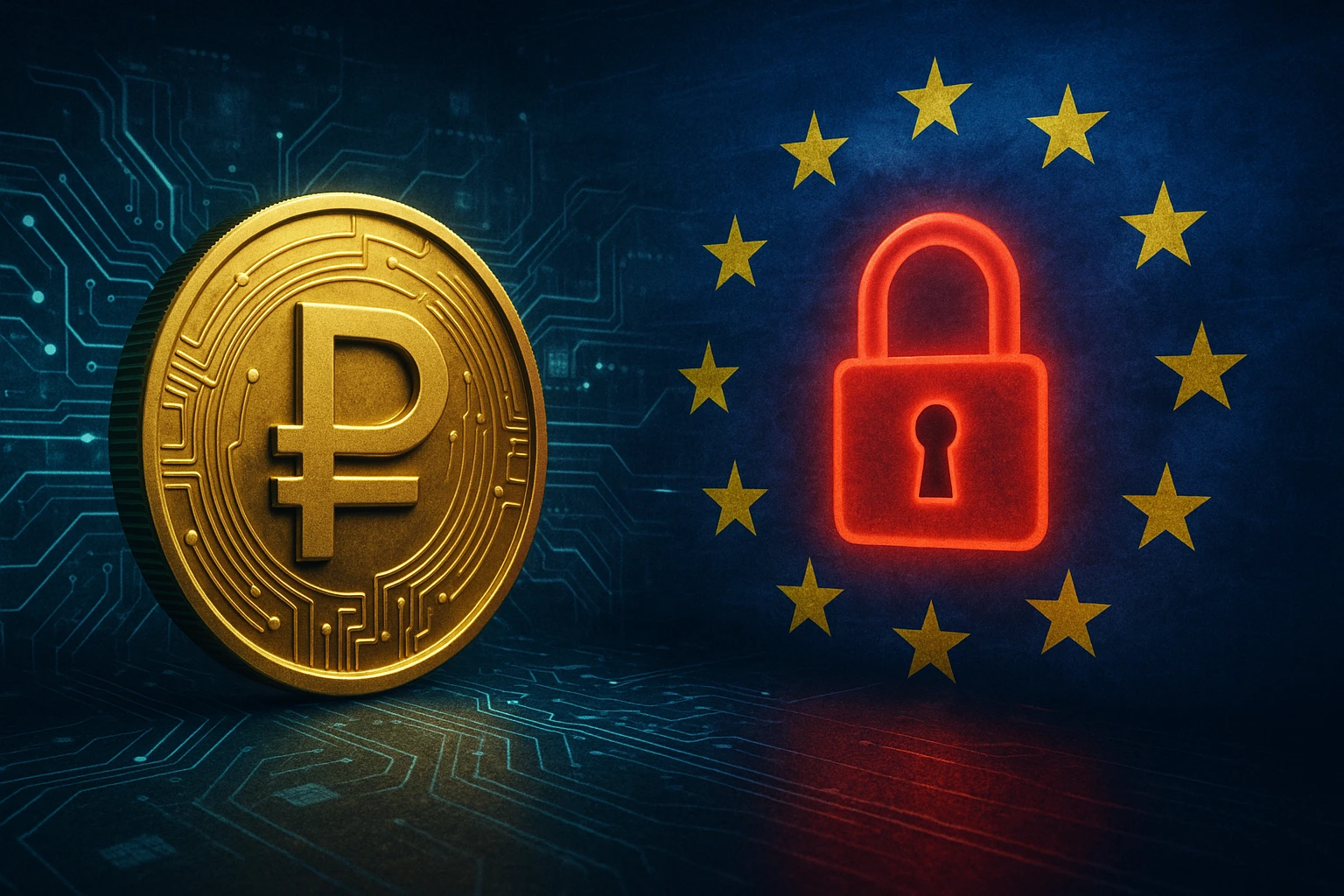The European Union is moving closer to sanctioning Russian stablecoin A7A5, a ruble-pegged cryptocurrency that has seen rapid growth. Officials and analysts warn the token may be used to bypass financial sanctions imposed after Russia’s invasion of Ukraine.
According to a new report from the Centre for Information Resilience (CIR), A7A5 operates through a network of shell companies and intermediaries. This setup allegedly allows Russian businesses to continue transactions with foreign partners while concealing the true origins of the funds.
Explosive Growth and Sanction Links
In just days, A7A5’s reported market capitalization jumped from $141 million to nearly $493 million. The issuer claims over 41 billion tokens in circulation, positioning A7A5 among the largest non-dollar stablecoins.
The token is issued by A7 LLC, a company already sanctioned by the EU, UK, US, and Singapore. Investigations have linked A7 LLC to Moldovan banker Ilan Shor, as well as Russian state-owned financial institutions Promsvyazbank and VEB.RF — both already on multiple sanction lists.
CIR researchers say A7A5’s structure relies on more than 30 payer companies to disguise payments and reduce traceability across borders.
Bypassing Restrictions Through Crypto
Analysts believe A7A5 was designed to help Russian entities maintain cross-border payments despite being cut off from global banking systems.
The stablecoin reportedly supports around 1,500 daily transactions and serves 10,000 clients, with much of its activity centered on trade with China. Expansion into African markets is already under discussion.
The project markets itself as a way to enable “independent financial freedom.” However, experts argue it primarily functions as a tool for sanctions evasion, undermining global financial controls.
EU’s Next Moves
The European Commission is now considering measures that would make the use or facilitation of A7A5 transactions illegal within the bloc. This would represent a shift from targeting entities to directly banning crypto instruments used for sanction evasion.
Such a move would build on the EU’s 19th sanctions package, which already introduced crypto-specific restrictions. If approved, A7A5 could become the first stablecoin explicitly blacklisted under EU sanctions law.
Verification and Enforcement Challenges
Despite its size, much of A7A5’s data comes from self-reported figures, making independent verification difficult. Analysts warn that even if banned, enforcement will be complicated.
Transactions can easily be routed through decentralized exchanges, peer-to-peer transfers, or non-EU intermediaries, limiting the EU’s ability to track flows.
Still, policymakers argue that sending a strong message against crypto-based sanctions evasion is critical to maintaining pressure on Russia.
Conclusion
The EU’s investigation into Russian stablecoin A7A5 highlights growing tension between digital finance and international law.
If sanctioned, A7A5 would mark a new phase in how regulators confront crypto’s role in global sanctions evasion. As the stablecoin market expands, the clash between innovation and enforcement is only set to intensify.


0 responses to “Russian stablecoin A7A5 faces EU sanctions over sanctions-evasion concerns”